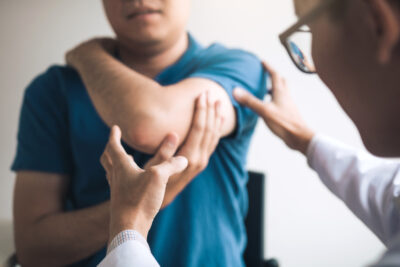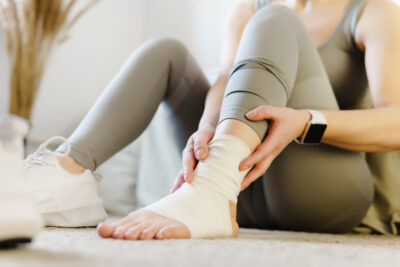Sprains, Strains and Automobiles to DOC

For movement, your bones, ligaments, tendons, and muscles must all work together in response to signals from your brain. If ligaments, tendons, or muscles are sprained or strained, movement is impaired. Knees, wrists, and ankles are most susceptible to sprain and strain injuries, usually caused by a fall or accident. Ligaments are like strong ropes that connect bones to other bones within the joint. Ligaments keep your joint stable and provide structure for the bones. A sprain is a stretch or tear of a ligament.
Symptoms of ligament sprains include:
- Pain at the time of the injury and increased pain with movement of the injured joint
- Bruising and tenderness
- Swelling
- Warm or feverish feeling to the skin
- Instability
- Inability to put weight or pressure on the joint or to grasp objects
Ligament sprains are graded on a severity scale:
- A mild sprain when the ligaments are only stretched.
- A moderate sprain when the ligaments are partially torn.
- A severe sprain when the ligaments are completely torn and may require surgical care.
Tendons connect bone to muscle. Muscles are coordinated and controlled by your brain and nervous system, which powers the motion of the joint. For example, if you want to lift your arm to answer a question, the brain sends a message to the muscles in your arm and you move it. A strain is an injury to the tendons and/or muscle. Similar to a sprain, strains may be a stretch, partial or complete tear in the tendon-muscle combination.
Symptoms of a strain include:
- Pain
- Muscle spasm and weakness
- Inflammation
- Cramping
The recommended treatment protocol for sprains and strains is rest, ice, compression, and elevation, or RICE. If sprain or strain symptoms persist, get in your automobile and drive to the nearest DOC location to see an orthopedic surgeon or specialty-trained PA for an accurate diagnosis and treatment. Surgery is sometimes required for a more serious tear.
For more information on the cost of care, click here.




